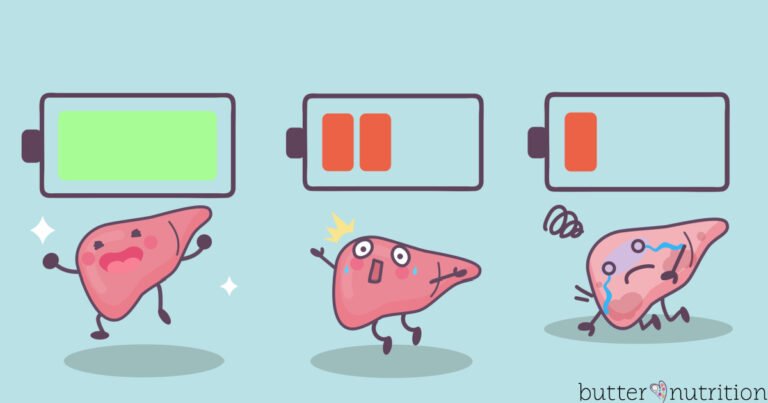 There is so much information out there about fiber, but the general consensus is that it is great for you if you tolerate it well.
There is so much information out there about fiber, but the general consensus is that it is great for you if you tolerate it well.
And this confuses people because, what does “tolerate” really mean?
In general, tolerating a food well means that it doesn’t change your gut, mood, bowels, sleep, energy, or any symptom in a negative way. You feel the same as usual or Even better!
Fiber can have great benefits for:
- bowel movements
- gut microbiome
- inflammation levels
- blood sugar
- cholesterol levels
- weight homeostasis
But what is not as well known is the type of fiber that is extremely beneficial for detoxification. It can literally act as a “drain” to your liver.
The power of soluble fiber
You may already know that there are two types of fiber, soluble and insoluble.
Soluble fiber turns into a gel-like substance in your digestive system, while insoluble fiber adds bulk to your stool.
Most high-fiber foods contain a mixture of soluble and insoluble fiber. However, there are some foods that are primarily soluble fiber. These are:
- beans/legumes (by far the highest accessible food source)
- oats
- apples
- some whole grains (especially oat bran and barley)
Soluble fiber has the unique ability to act like a sponge. It absorbs the bile (and toxins in the bile) that are released into the small intestine when you eat a meal. Soluble fiber is able to absorb and trap more toxins than other types of food for removal from the body in your stool. This is due to the ability of soluble fiber to turn into a gel-like substance.
Most people don’t know that bile containing toxins is released into the first part of your small intestine, the duodenum. Then at the end of your small intestine (called the ileum) it is reabsorbed and recycled, with only about 5% making it out of your body naturally in your stool. This means that 95% of your bile acids are absorbed and recycled at the end of your small intestine in a process called enterohepatic circulation. So if you don’t have enough soluble fiber to absorb and carry toxins out of the body, they can recirculate, building up over time.


In short, soluble fiber short-circuits enterohepatic circulation and forces more bile and toxins into your stool. This helps relieve an overworked and sluggish liver.
This is why eating processed foods and the typical American diet can be harmful and toxic decade after decade, it just doesn’t provide enough support in the way of soluble fiber to help “drain” your liver on a regular basis . A diet low in fiber can lead to a build-up of toxins and a decline in overall health.
Attention to soluble fiber
Getting more soluble fiber in your diet can do a lot of good for the gut-liver axis. But some people just aren’t ready for that yet. It is not unusual for people to have an intolerance to foods high in soluble fiber. This is especially true for those who are ill and experience many chronic health symptoms. They may not be “healthy enough” yet for soluble fiber in their diet and may do better on a low-fiber diet or foods higher in insoluble fiber. After working on other parts of your diet (minerals, nutrient excess, protein deficiency) you may be better able to tolerate different types of fiber over time.
Always be on the lookout for the most common signs that you have a soluble fiber intolerance. They include bloating, gas, constipation, diarrhea, swelling/swelling, fatigue, and an increase in symptoms of all kinds. These are all signs that you are pushing your detox too far and should slow things down by reducing the amount of soluble fiber in your diet. Never ignore what your body is trying to tell you as it will lead to more health imbalances in the long run.
Add soluble fiber gradually if convenient
In summary, soluble fiber can help support liver function by binding toxins and bile acids, ensuring they are excreted from the body. This process can reduce the workload on the liver, allowing it to work more efficiently. A healthy liver means better overall health (especially gut, metabolic and circulatory) and a lower risk of diseases such as liver cancer, cirrhosis and hepatitis. Always add soluble fiber to your diet gradually and see how your body responds before slowly increasing it.
Ideally, draining your liver is combined with a systematic approach that gives your liver less work to do while addressing any nutrient deficiencies and/or nutrient excesses.
Ready to learn more about how to detox and drain your liver to optimize your health? Consider partnering with or buying it DRAIN Detox Method Masterclass.
PIN IT:


Bibliographical references:

